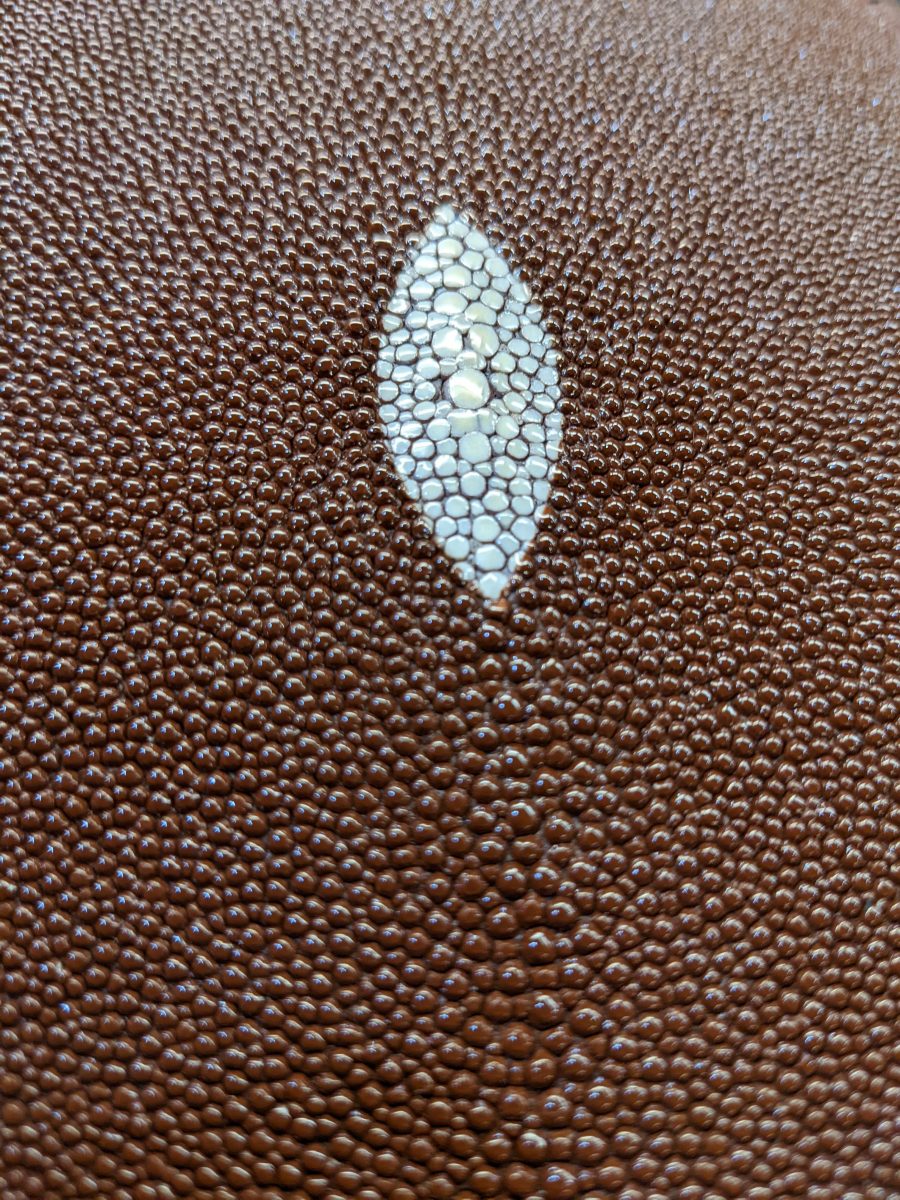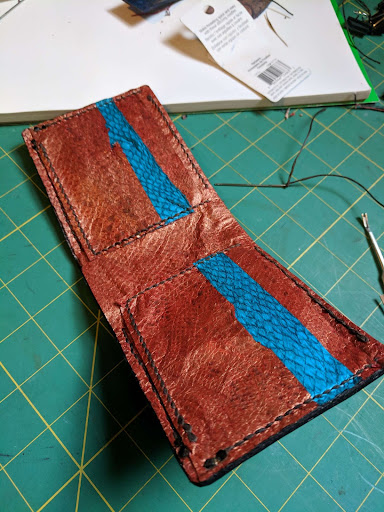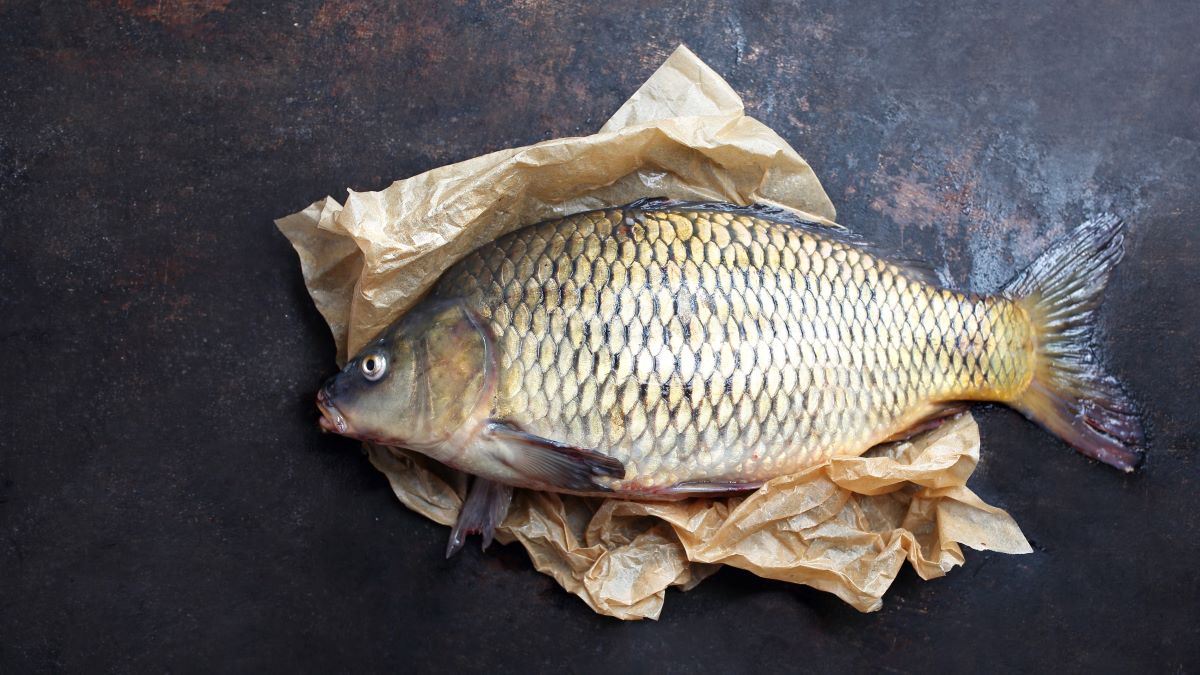Fish leather is a durable, exotic textile crafted by tanning the skin of fish like salmon or tilapia. It is a sustainable by-product of the fishing industry.

Table of Contents
- Understanding Fish Leather: An Innovative and Sustainable Material
- How is Fish Leather Made? The Journey from Skin to Textile
- Which Fish Species Are Used for Leather Production?
- Why Choose Fish Leather? Exploring Its Advantages
- Where Can You Find Fish Leather Products?
- Fish Leather vs. Traditional Leather: A Comparison
- Frequently Asked Questions About Fish Leather
What is Fish Leather: A Comprehensive Look at How It’s Made and Where It Comes From
Understanding Fish Leather: An Innovative and Sustainable Material
Marine leather, commonly known as fish leather, is a unique material created from the processed skins of fish. Far from being a new invention, this material has been used for centuries by coastal and indigenous communities for its resilience and distinctive texture. Today, it stands at the intersection of luxury and sustainability, offering a compelling alternative to conventional leathers.

The material is derived from a by-product of the food industry. Billions of pounds of fish skins are discarded annually, but tanneries are now transforming this waste into a high-value textile. This process of upcycling not only reduces waste but also provides a material with remarkable properties without placing additional strain on our ecosystems.

Defining Marine Leather: More Than Just a By-product
At its core, fish leather is the tanned skin of aquatic animals, primarily fish. The tanning process is what converts the raw, perishable skin into a stable, durable, and flexible material suitable for manufacturing goods. Unlike the hides of land animals, fish skins possess a unique cross-fiber structure that gives them surprising strength and elasticity. This structure results in a material that is both lightweight and exceptionally tear-resistant.
Its natural scale patterns give it an exotic and intricate appearance, making each piece one-of-a-kind. The size of the scales and the texture of the leather vary significantly depending on the species, offering a diverse palette for designers and artisans. It’s a material that champions individuality, a quality highly prized by those who value distinctive, handcrafted goods.
What Are the Unique Characteristics of Fish Skin Leather?
Fish skin leather is distinguished by several key features. Its most prominent characteristic is its visual texture. The pockets left by the scales create a pattern that can range from a fine, delicate mesh to a bolder, more pronounced design. This inherent pattern means no two pieces are ever identical.
In terms of physical properties, fish leather is remarkably strong. Despite its thin and seemingly delicate nature, its tensile strength is often greater than that of cowhide of a similar thickness. This is due to the dense, crisscrossing collagen fibers in the skin. Furthermore, it is incredibly lightweight and flexible, making it comfortable for use in apparel and accessories that conform to the body.
How is Fish Leather Made? The Journey from Skin to Textile
The transformation of a raw fish skin into a supple, luxurious leather is a meticulous process involving several stages. While the fundamental principles are similar to those used for traditional leathers, the techniques are adapted to the unique properties of fish skin. The goal is to preserve the natural beauty of the skin while ensuring its longevity and usability.
Step 1: Sourcing and Preparing the Fish Skins
The journey begins with sourcing high-quality skins, typically from fish processing plants. Species like salmon, tilapia, and perch are favored. Once acquired, the skins must be prepared for tanning. This involves a thorough cleaning to remove any remaining flesh, fat, and membranes. The scales are then meticulously removed in a process called descaling, which reveals the beautiful scale pocket pattern beneath. This preparatory phase is crucial for ensuring the tanning agents can penetrate the skin evenly.
Step 2: The Tanning Process Explained
Tanning is the chemical process that stabilizes the collagen proteins in the skin to prevent them from putrefying and to make them strong and pliable. There are two primary methods used for fish leather: vegetable tanning and chrome tanning. Vegetable tanning uses natural tannins derived from tree bark and plants, resulting in a firm, natural-looking leather. This eco-friendly method can take weeks to complete.
Alternatively, chrome tanning uses chromium salts and is much faster, often completed within a day. While efficient, it produces wastewater containing heavy metals that require careful management. Many producers of fish leather prefer vegetable tanning or other chrome-free methods to maintain the material’s sustainable credentials.
Step 3: Finishing Touches – Dyeing and Softening
After tanning, the leather is dyed. Fish skins absorb color vibrantly, allowing for a wide spectrum of rich, deep hues. Aniline dyes are often used to maintain the transparency of the finish, ensuring the natural scale patterns remain visible. Following dyeing, the leather is “fatliquored”—a process where oils and waxes are added back into the material to make it soft and flexible.
Finally, the leather is stretched, dried, and sometimes polished or glazed to achieve the desired finish. It may be softened by tumbling it in a large drum, resulting in a textile that is ready to be crafted into high-quality products.
Which Fish Species Are Used for Leather Production?
A variety of fish species can be used to produce leather, each offering a distinct look and feel. The choice of species depends on factors like skin size, scale pattern, and durability. The most commonly used types have proven to be both beautiful and practical for manufacturing.
Salmon Leather: The Popular Choice
Salmon leather is one of the most popular and widely available types of fish leather. Its skins are relatively large and feature a fine, delicate scale pattern that is both subtle and elegant. The texture is smooth and refined, making it a favorite for luxury goods like wallets, watch straps, and handbags. Its strength and flexibility are well-suited for items that require both beauty and durability.
Tilapia Leather: Known for its Fine Scale Pockets
Tilapia leather is known for its smaller, more uniform scale pockets, which create a highly textured, almost geometric pattern. Though the skins are smaller than salmon, they are incredibly strong and can be stitched together to create larger panels. This leather is often used for decorative inlays, footwear, and bold statement accessories.
Other Notable Species: Carp, Perch, and Cod
Beyond salmon and tilapia, several other species are used. Carp leather is known for its large, distinctive scale pockets, giving it a very exotic appearance. Perch leather is rougher in texture and extremely durable, making it suitable for more rugged applications. Cod, wolfish, and even eel skins are also transformed into unique leathers, each contributing a different aesthetic to the world of exotic textiles.
Why Choose Fish Leather? Exploring Its Advantages
The growing interest in fish leather is driven by its unique combination of aesthetic appeal, physical performance, and environmental benefits. It offers a fresh perspective in a market dominated by traditional materials, appealing to consumers and creators who prioritize innovation and responsibility.
Unmatched Durability and Strength
Despite its delicate appearance, fish leather is one of the strongest leathers available. Scientific tests have shown that salmon leather, for instance, can be up to nine times stronger than lambskin or cowhide of a similar thickness. This strength comes from the naturally cross-linked fiber structure of the skin, which distributes stress evenly across the material. This makes it an excellent choice for products that endure regular use, such as belts, wallets, and bags.
The Sustainability Factor: An Eco-Friendly Alternative
One of the most compelling reasons to choose fish leather is its sustainability. It is made from a resource that would otherwise be discarded by the fishing industry. By upcycling these skins, manufacturers reduce landfill and ocean waste. Furthermore, many tanneries that specialize in fish leather utilize environmentally friendly vegetable tanning methods, which avoid the harsh chemicals associated with conventional chrome tanning. This circular approach minimizes the environmental footprint and promotes a more responsible use of natural resources.
A Unique Aesthetic Appeal
Fish leather provides a look and feel that cannot be replicated. The natural scale patterns offer a three-dimensional texture that is both visually and tactilely engaging. This unique texture makes it a coveted material for bespoke accessories, a principle of quality and distinction that resonates with the ethos of expert leathercrafters who value materials that tell a story. Its exotic appearance allows for the creation of truly distinctive and memorable pieces.
Where Can You Find Fish Leather Products?
Once a niche material, fish leather is now making its way into various sectors of the consumer market. Its versatility and exotic charm have captured the attention of designers and brands worldwide, leading to its use in a growing range of products.
Applications in High Fashion and Accessories
High-fashion houses and avant-garde designers have embraced fish leather for its unique aesthetic. It is frequently featured in runway collections for clothing, footwear, and handbags. Its ability to take on vibrant colors and its distinctive texture make it a perfect material for creating standout pieces. You can find it used in everything from couture gowns to luxury sneakers.
The Rise of Fish Leather in Luxury Goods
In the world of luxury accessories, fish leather has found a natural home. Its combination of beauty, strength, and sustainability aligns perfectly with the values of modern luxury. Artisans use it to craft high-end wallets, phone cases, watch straps, and belts. For the discerning customer, a product made from fish leather represents a commitment to both style and substance, offering a sophisticated alternative to more common exotic skins.
Fish Leather vs. Traditional Leather: A Comparison
When evaluating fish leather, it is helpful to compare it to more conventional leathers like cowhide. This comparison highlights its unique position in the market based on its physical properties and environmental impact.
| Feature | Fish Leather | Cowhide Leather |
|---|---|---|
| Source | By-product of the fishing industry (upcycled waste) | Primary product or co-product of the meat industry |
| Strength | Exceptionally strong for its thickness due to cross-fiber structure | Strong and durable, but generally requires greater thickness for comparable strength |
| Texture | Unique, scaly pattern; varies greatly by species | Smooth or pebbled grain; relatively uniform |
| Weight | Very lightweight and flexible | Heavier and often stiffer |
| Environmental Impact | Reduces waste; often uses eco-friendly vegetable tanning | Significant land and water use for livestock; chrome tanning is common |
Frequently Asked Questions About Fish Leather
As a relatively uncommon material, fish leather often prompts several questions. Addressing these common queries helps demystify the material and clarify its practical characteristics.
Does fish leather smell like fish?
No, it does not. The tanning process completely removes any fishy odor from the skin. During tanning, all the fats and oils that cause the smell are stripped away and replaced with tanning agents. The finished product has a neutral, classic leather scent, just like any other high-quality leather.
Is fish leather waterproof?
Like most animal leathers, fish leather is naturally water-resistant but not fully waterproof. It can withstand light exposure to moisture, but it should not be submerged in water. For increased protection, a water-resistant coating can be applied to the finished product, but proper care is still recommended to maintain its condition.
How do you care for fish leather products?
Caring for fish leather is similar to caring for other fine leathers. It should be kept clean by wiping it with a soft, damp cloth. For deeper cleaning or conditioning, it is best to use a cleaner specifically designed for exotic leathers. Avoid using harsh chemicals or saturating the material with water. Proper storage away from direct sunlight and extreme temperatures will ensure its longevity.



